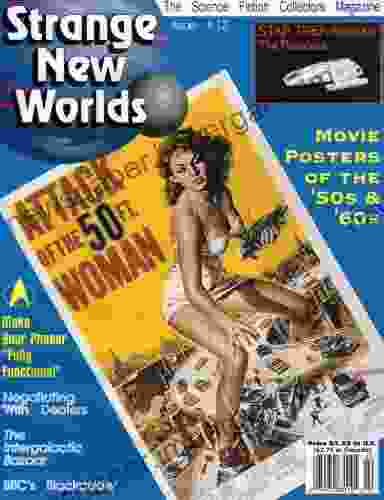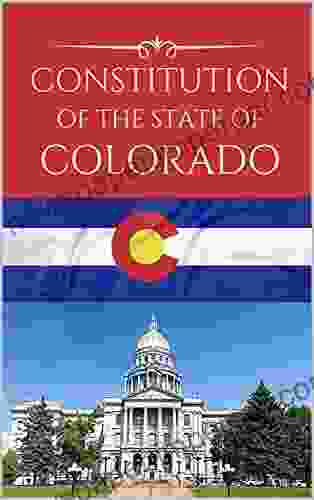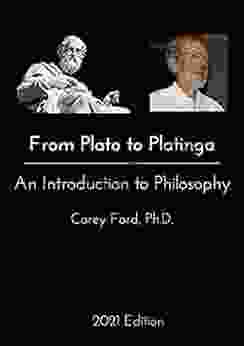How Historians Map the Past: Unveiling the Hidden Layers of History

Maps have always played a crucial role in our understanding of the world. They provide a visual representation of our surroundings, helping us navigate, plan, and make sense of the complex geography around us. But what about the past? Can maps also help us understand the events and people that have shaped our history?
4.4 out of 5
| Language | : | English |
| File size | : | 3119 KB |
| Text-to-Speech | : | Enabled |
| Screen Reader | : | Supported |
| Enhanced typesetting | : | Enabled |
| Word Wise | : | Enabled |
| Print length | : | 204 pages |
| Lending | : | Enabled |
The answer is a resounding yes. Historical cartography, the study and analysis of maps from the past, is a powerful tool that historians use to uncover the secrets of bygone eras. By examining old maps, historians can gain insights into the spatial relationships, social structures, and cultural landscapes of past societies.
The Techniques of Historical Cartography
Historical cartographers employ a wide range of techniques to analyze and interpret old maps. These techniques include:
- Georeferencing: Aligning historical maps with modern geographic data to accurately overlay and compare them.
- Spatial analysis: Using GIS software to analyze the spatial relationships between different features on maps, such as settlements, roads, and boundaries.
- Map comparison: Comparing maps created at different times to identify changes in landscapes, infrastructure, and other features.
- Historical research: Consulting historical documents, texts, and other sources to contextualize and interpret the information found on maps.
The Challenges of Historical Cartography
While historical cartography offers a wealth of information, it also presents several challenges. These challenges include:
- Map accuracy: Old maps may not be entirely accurate, due to limitations in surveying techniques and the subjective nature of mapmaking.
- Map biases: Maps can reflect the biases and perspectives of their creators, which can influence the information they contain.
- Map availability: Not all historical maps have survived to the present day, and those that have may be difficult to access or interpret.
The Advancements in Historical Cartography
Despite the challenges, historical cartography has experienced significant advancements in recent years. These advancements include:
- Digital mapping: The digitization of historical maps has made them more accessible and easier to analyze.
- GIS technology: GIS software allows historians to perform complex spatial analysis and visualize historical data in new ways.
- Interdisciplinary collaboration: Historians are increasingly collaborating with geographers, computer scientists, and other experts to gain new insights from historical maps.
How Maps Shape Our Understanding of History
Historical maps play a vital role in shaping our understanding of the past. They can provide evidence for historical events, illustrate the development of cultures and civilizations, and reveal the spatial dimensions of historical processes. For example, maps can show us:
- The location and layout of ancient cities, such as Rome or Athens.
- The expansion and contraction of empires over time, such as the Roman Empire or the Mongol Empire.
- The routes of explorers and conquerors, such as Christopher Columbus or Alexander the Great.
- The social and economic structures of past societies, such as the feudal system or the plantation economy.
Historical cartography is a fascinating and dynamic field that offers a unique window into the past. By studying old maps, historians can uncover the hidden layers of history and gain a deeper understanding of the societies and events that have shaped our world. As technology continues to advance and interdisciplinary collaboration expands, the potential of historical cartography to illuminate the past is limitless.
For those who wish to delve deeper into this captivating field, I highly recommend the book "How Historians Map the Past: A Guide to Historical Cartography" by David Rumsey. This comprehensive and beautifully illustrated book provides a thorough to the techniques, challenges, and advancements in historical cartography. It is an invaluable resource for students, researchers, and anyone interested in exploring the rich tapestry of the past through the lens of maps.
4.4 out of 5
| Language | : | English |
| File size | : | 3119 KB |
| Text-to-Speech | : | Enabled |
| Screen Reader | : | Supported |
| Enhanced typesetting | : | Enabled |
| Word Wise | : | Enabled |
| Print length | : | 204 pages |
| Lending | : | Enabled |
Do you want to contribute by writing guest posts on this blog?
Please contact us and send us a resume of previous articles that you have written.
 Book
Book Novel
Novel Page
Page Chapter
Chapter Text
Text Story
Story Genre
Genre Reader
Reader Library
Library Paperback
Paperback E-book
E-book Magazine
Magazine Newspaper
Newspaper Paragraph
Paragraph Sentence
Sentence Bookmark
Bookmark Shelf
Shelf Glossary
Glossary Bibliography
Bibliography Foreword
Foreword Preface
Preface Synopsis
Synopsis Annotation
Annotation Footnote
Footnote Manuscript
Manuscript Scroll
Scroll Codex
Codex Tome
Tome Bestseller
Bestseller Classics
Classics Library card
Library card Narrative
Narrative Biography
Biography Autobiography
Autobiography Memoir
Memoir Reference
Reference Encyclopedia
Encyclopedia John Gillingham Cpa
John Gillingham Cpa John Medina
John Medina John Shiffman
John Shiffman Jonathan Ray
Jonathan Ray John F Robyt
John F Robyt John Gunders Ph D
John Gunders Ph D Jonathan Alexander
Jonathan Alexander Jonas Michanek
Jonas Michanek John Parker
John Parker Jon P Bloch
Jon P Bloch John Haldane
John Haldane John P Cox
John P Cox Joseph B Soloveitchik
Joseph B Soloveitchik John Killen
John Killen John Vivian
John Vivian Jon Jureidini
Jon Jureidini John S Ogrodniczuk
John S Ogrodniczuk John M Delehanty
John M Delehanty Joseph Frank
Joseph Frank Jon Mooallem
Jon Mooallem
Light bulbAdvertise smarter! Our strategic ad space ensures maximum exposure. Reserve your spot today!

 George HayesStrange New Worlds: 12 Movie Posters of the '50s and '60s That Capture the...
George HayesStrange New Worlds: 12 Movie Posters of the '50s and '60s That Capture the...
 John SteinbeckEssentials of Radiofrequency Ablation of the Spine and Joints: Your Guide to...
John SteinbeckEssentials of Radiofrequency Ablation of the Spine and Joints: Your Guide to...
 Stephen FosterUnlock Freedom from Neck Pain and Tension: Your Comprehensive Guide to Relief
Stephen FosterUnlock Freedom from Neck Pain and Tension: Your Comprehensive Guide to Relief Patrick RothfussFollow ·15.9k
Patrick RothfussFollow ·15.9k Mark TwainFollow ·13.4k
Mark TwainFollow ·13.4k Curtis StewartFollow ·19.7k
Curtis StewartFollow ·19.7k Rubén DaríoFollow ·17.2k
Rubén DaríoFollow ·17.2k Dan BellFollow ·3.7k
Dan BellFollow ·3.7k Jacob HayesFollow ·10k
Jacob HayesFollow ·10k Colin RichardsonFollow ·15.9k
Colin RichardsonFollow ·15.9k Gary ReedFollow ·4.8k
Gary ReedFollow ·4.8k

 Jake Powell
Jake PowellThe Constitution of the State of Colorado: A Legacy of...
Since its adoption in 1876, the...

 Devin Ross
Devin RossFrom Plato to Plantinga: A Journey Through the History of...
Philosophy is the study of...

 Robin Powell
Robin PowellWords That Hurt, Words That Heal: The Power of Language...
Words are powerful. They can...

 T.S. Eliot
T.S. EliotTantalize Your Taste Buds with Over 90 Low-Carb Ethnic...
Indulge in a Culinary Adventure with "Over...
4.4 out of 5
| Language | : | English |
| File size | : | 3119 KB |
| Text-to-Speech | : | Enabled |
| Screen Reader | : | Supported |
| Enhanced typesetting | : | Enabled |
| Word Wise | : | Enabled |
| Print length | : | 204 pages |
| Lending | : | Enabled |










